Surprisingly, one of the most common questions asked by those with a snoring problem is “Are there any surgery options for people who snore?”. While surgery is certainly an option for those who have a severe snoring issue, it should be considered as a last resort when all else fails. In most cases, doctors will only perform such surgeries if snoring is tied to a sleep-related breathing disorder such as sleep apnea.
There are a few different types of surgeries that your doctor may suggest when it comes to dealing with a severe snoring problem. Some methods involve the removal of excess tissues while other methods stiffen or shrink problematic areas such as the uvula or soft palate. Below are a list of common surgeries and a brief description of each.
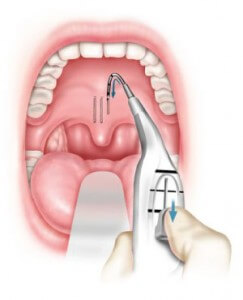 Pillar Procedure: The Medtronic Pillar Procedure is one of the least invasive surgeries and is conducted at your doctor’s office under local anesthetics. The entire procedure takes approximately 15-20 minutes and there is virtually no recovery period. Most people are able to eat or drink within a few hours after the procedure. The actual procedure involves inserting three to five 3/4″ long polyester fiber pillars vertically into the soft pallet using a simple insertion device. These pillars cause hard scar tissue to form around the soft palate within 3-12 months. The scar tissue stiffens the soft palate which reduces vibration and movement. You can learn more about the Pillar Procedure here.
Pillar Procedure: The Medtronic Pillar Procedure is one of the least invasive surgeries and is conducted at your doctor’s office under local anesthetics. The entire procedure takes approximately 15-20 minutes and there is virtually no recovery period. Most people are able to eat or drink within a few hours after the procedure. The actual procedure involves inserting three to five 3/4″ long polyester fiber pillars vertically into the soft pallet using a simple insertion device. These pillars cause hard scar tissue to form around the soft palate within 3-12 months. The scar tissue stiffens the soft palate which reduces vibration and movement. You can learn more about the Pillar Procedure here.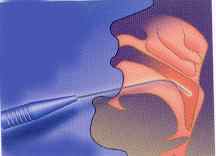 Radiofrequency Palatoplasty: This fairly new procedure works by using the same principle as the Pillar Procedure but does so using electrical current. During the procedure, the soft palate and the uvula are shrunk and stiffened using a special device. This procedure only takes a few minutes to conduct and the recovery period is typically between 1-3 days. During this time one may experience a mild sore throat. The effects of the surgery on snoring are typically noticed after 4 weeks. Additional treatments may be required if not effective after the first procedure.
Radiofrequency Palatoplasty: This fairly new procedure works by using the same principle as the Pillar Procedure but does so using electrical current. During the procedure, the soft palate and the uvula are shrunk and stiffened using a special device. This procedure only takes a few minutes to conduct and the recovery period is typically between 1-3 days. During this time one may experience a mild sore throat. The effects of the surgery on snoring are typically noticed after 4 weeks. Additional treatments may be required if not effective after the first procedure.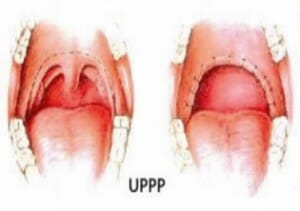 Uvulopalatopharyngoplasty (UPPP): The UPPP is a bit more invasive and involves removal of tissue and widening of the airway. The procedure is typically performed while you’re awake. During the procedure, the tonsils, uvula, adenoids, pharynx, and parts of the soft palate may or may not be removed. The recovery period is much longer in comparison to the pillar procedure or radiofrequency palatoplasty. Most experience difficulty swallowing or pain for approximately 3 weeks after the surgery.
Uvulopalatopharyngoplasty (UPPP): The UPPP is a bit more invasive and involves removal of tissue and widening of the airway. The procedure is typically performed while you’re awake. During the procedure, the tonsils, uvula, adenoids, pharynx, and parts of the soft palate may or may not be removed. The recovery period is much longer in comparison to the pillar procedure or radiofrequency palatoplasty. Most experience difficulty swallowing or pain for approximately 3 weeks after the surgery.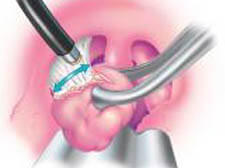 Tonsillectomy/adenoidectomy: In cases where enlarged tonsils or adenoids are causing a breathing obstruction, a Tonsillectomy or Adenoidectomy may be performed. The tonsils are lymphoid tissue that is located at the root of the tongue while adenoids are also lymphoid tissue that is located behind the nasal passage. Both the tonsils and adenoids are commonly removed during the same procedure. These procedures are conducted under general anesthesia and the recovery period is typically between 1-2 weeks.
Tonsillectomy/adenoidectomy: In cases where enlarged tonsils or adenoids are causing a breathing obstruction, a Tonsillectomy or Adenoidectomy may be performed. The tonsils are lymphoid tissue that is located at the root of the tongue while adenoids are also lymphoid tissue that is located behind the nasal passage. Both the tonsils and adenoids are commonly removed during the same procedure. These procedures are conducted under general anesthesia and the recovery period is typically between 1-2 weeks.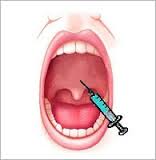 Injection snoreplasty: Introduced in 2000, Injection snoreplasty a minimally invasive procedure that is used to help control snoring. This outpatient procedure is performed under local anesthesia and involves injecting a “hardening” agent such as Sodium tetradecyl sulfate into the soft palate. Within a few days a blister forms which ultimately causes the area to harden or become stiffer. The patient is typically able to return to work the same day while discomfort may persist for several days afterward.
Injection snoreplasty: Introduced in 2000, Injection snoreplasty a minimally invasive procedure that is used to help control snoring. This outpatient procedure is performed under local anesthesia and involves injecting a “hardening” agent such as Sodium tetradecyl sulfate into the soft palate. Within a few days a blister forms which ultimately causes the area to harden or become stiffer. The patient is typically able to return to work the same day while discomfort may persist for several days afterward.
Keep in mind that certain risks are involved with each procedure. These risks should be discussed with your doctor prior to undergoing any procedure. Since risks are involved, most doctors suggest stopping snoring alternatives before recommending surgery. There are several simple treatment options that are often effective and permanent solutions that should be considered before looking into surgery. Here are a few non-surgical approaches that can relieve snoring.
Alternative non-surgical remedies to stop snoring
 Lose weight: In many cases, snoring can be reduced or even eliminated by simply losing weight. If you are overweight or obese, shedding a few pounds will not only be beneficial when it comes to snoring but will also benefit your overall health. How is being overweight related to snoring? When overweight, excess fatty tissues tend to become stored around the neck. This extra tissue will often flap around or cause a partial blockage of the airway. Men are more susceptible to snoring simply because the neck is one of the most common places where fat tends to accumulate.
Lose weight: In many cases, snoring can be reduced or even eliminated by simply losing weight. If you are overweight or obese, shedding a few pounds will not only be beneficial when it comes to snoring but will also benefit your overall health. How is being overweight related to snoring? When overweight, excess fatty tissues tend to become stored around the neck. This extra tissue will often flap around or cause a partial blockage of the airway. Men are more susceptible to snoring simply because the neck is one of the most common places where fat tends to accumulate.- Change sleeping positions: Eliminating a snoring problem may be easier than you think. Some people are positional snorers meaning that they only snore when sleeping in a particular position. In many cases, snoring occurs while sleeping on the back. If this is the case, try sleeping on your side. You can even sew tennis balls into the back of your pajamas to prevent rollover.
- Avoid alcohol before going to bed: Consuming alcohol prior to going to bed acts as a sedative and will cause the tissues in the throat area to relax and often causes obstructed breathing. If you have noticed an increase in the intensity of your snoring after consuming alcohol then this may be a contributing factor. If you do consume alcohol, do so 4-5 hours prior to going to bed.
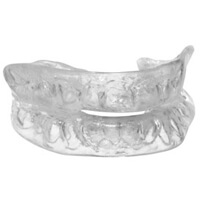 Snoring mouthpiece: The “snoring mouthpiece” or mandibular advancement device is one of my favorite non-surgical remedies for snoring. These simple devices work by holding the lower jaw slightly forward which tightens the muscles in the airway, preventing movement. Several different designs are available and they can be purchased for around $100 or less. Here’s a table that will help you compare some of the most popular devices on the market today. I’ve also hand-picked my favorite 3 based on experience with each product.
Snoring mouthpiece: The “snoring mouthpiece” or mandibular advancement device is one of my favorite non-surgical remedies for snoring. These simple devices work by holding the lower jaw slightly forward which tightens the muscles in the airway, preventing movement. Several different designs are available and they can be purchased for around $100 or less. Here’s a table that will help you compare some of the most popular devices on the market today. I’ve also hand-picked my favorite 3 based on experience with each product.
What’s the best decision?
Ultimately, the decision to undergo surgery is in your hands. Most experts agree that lifestyle changes should be the first approach to treating common snoring. If you decide to go the surgery route consider the cost of each procedure. Simple procedures such as Radiofrequency Palatoplasty or Pillar Procedure typically cost between $2,000 to $3,000 while other surgeries are typically more expensive. Keep in mind that many insurance companies will not cover surgery for simple snoring unless it relates to a sleep-related breathing disorder such as sleep apnea.
Share This Post: